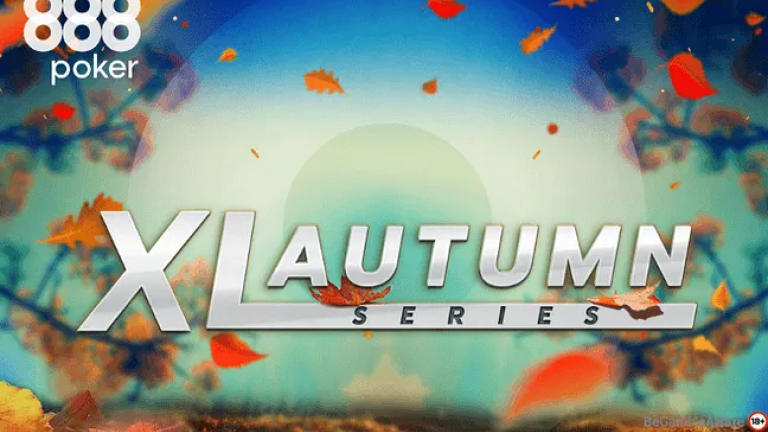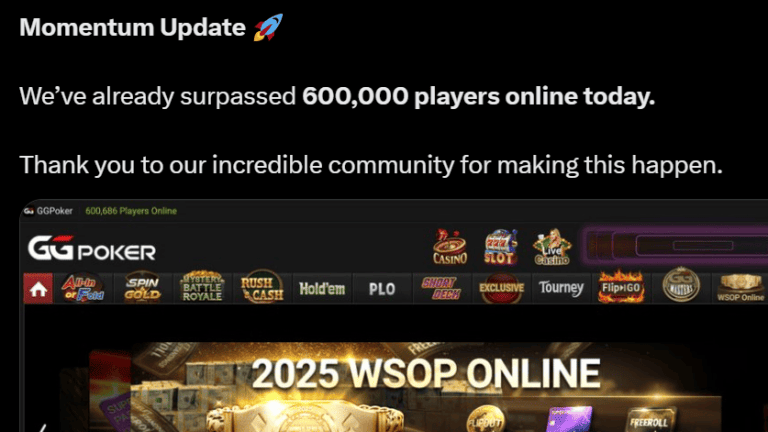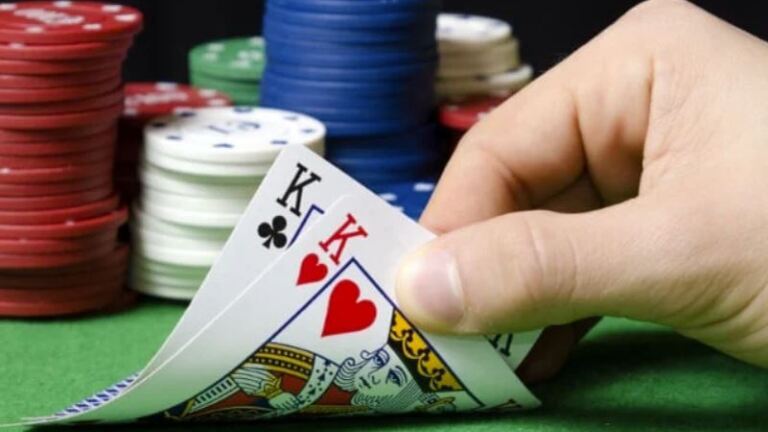WTF?! Where di you get this nonsense from? - you are probably asking right now.
Of course, success in poker is measured by the amount of money won, don't let this be your first aim when playing micro stakes. The reason for this is very simple. A lot of players start multitabling already at the micros, which can truly get you more money within a certain time frame, but the problem with this is that this way your gameplay will not improve that rapidly.
When you are multitabling, you are basically playing a 'robot' game. But poker's beauty lies exactly in the fact that you cannot put all similar situations in one group; each and every hand is different from the other. The main goal is to LEARN TO THINK, and not to memorize stock elements and play like a bot.
You have to trive to keep improving and push yourself to make those borderline situations +EV. Put your brain under pressure and think while you are playing. Instead of the many tables, play much more starting hands, especially from position. LEARN TO MAKE THE MOST OUT OF YOUR STARTING HANDS.
Going up the stakes, you will cease to have the opportunity to be waiting for premium hands. The better opponents you are playing against, the less chance there is that they will pay your good hands. At NL50, for example, set mining will not bring you a fortune, it will provide you with minimal income and you will be a rakeback pro.
Of course, we are not against the players that play many tables at NL100, but please: don't make it your goal at the micros to grind together 3-400$ a month. You can make a lot more money than that.

Because of all this, we would advise you not to play more than 4 tables at the same time. Believe it, if you accept this you will be surprised how fast you can go up the stakes. It is a fact, that you can make more money at four NL100 tables than at 12 NL10 tables. The whole learning process and micro limit struggle is to get to the higher levels where you can win serious amounts of money in as little as one month.
I have started improving. What is the next step?
If you feel you are good enough at the micros and can win on the long run with a TAG gameplay, the problem of how to increase your income will arise. In these cases, most of the players choose to play the same game (with a minor decrease in quality) on more tables. Is this the right thing to do? Well, it depends what our long-term aim is.
If you want to stick at your level for a longer time, the the answer is yes.
If you want to get to higher limits sooner or later, however, the answer is no. The requirements of stepping to a higher level are basically these two things: bankroll and skill. Your bankroll will probably not be a problem (supposing that as a micro you will not want to start draining it every month), but the skills will not improve if you start playing a huge amount of tables at the same stakes.
In order to know the right decision, a few things need to be made clear first.
Where does a winning player get the money from?
Winnings are basically made up of two things.
- Standard winning gameplay, where the profit mostly comes from having an edge over the fish. They call too much with draws that have bad odds, bluff in situations where they don't represent anything and make bad hero calls, never fold overpairs or top pairs, and so on. The bigger part of profit comes from these players.
- Making good decisions in borderline situations. In these cases, you can not only win against fish, but also against weaker (NIT, or station-type) regulars. This is a very sensitive area, and provides only a small part of your winrate, but a good fold/call/bluff will greatly improve your BB/100. It is also important to see that at least in half of the borderline situations the question will not be how to win a bit more, but how to lose less. Every single big blind you can spare in these situations will vastly increase your winrate, as most of your opponents will lose in these hands.
Our recommendation is that you start playing more hands instead of more tables. Let's say you are a long-term winner with your standard hand range. If you start playing the top 5-10% of the hands you would have previously folded (strictly when you're in position!!!), it will probably make you plus EV. The experience you can gain from playing borderline situations will be very valuable, especially on the higher levels.
It is not very hard to recognize that you will not always be able to stack the high-limit regulars with a set when they have an overpair (or anything else basically). Similarly, the amount of fish will rapidly decrease when going up the levels (some of them are much dumber than the micro limit ones, though).
Here are two typical examples when you can widen your range without serious risk:
- Call from CO and Button with 98s-54s, 97s-64s, IF a nit UTG raised before you
- Call from CO and Button with and speculative and broadway cards, if the person that raised cbets below 60% on the flop.
Examples
Position play against a nit with borderline/trash cards
Example no. 1.
NL30 SH - 86s against nit UTG
Opponent description: 19/14, cbet: 53
$0.15/$0.30 No Limit Holdem
5 Players
Stacks:
UTG Player5 $63.51
CO Player8 $41.26
BTN Hero $33.53
SB Player10 $46.90
BB Player1 $35.40
Pre-Flop: ($0.45, 5 players) Hero is BTN


Player5 raises to $0.90, 1 fold, Hero calls $0.90, 2 folds
Flop: ($2.25, 2 players)



Player5 checks, Hero bets $1.60, Player5 folds
Example no. 2.
NL30 SH - JTs
Opponent description: 27/10, cbet:50, NIT
This opponent is one that only cbets if he hits the flop. If you are not too rude and will probably be HU on the flop, the call IP will be +EV with any two. If your opponent does not get a good flop, you can take his chips. If he cbets, you have to let go.
$0.15/$0.30 No Limit Holdem
5 Players
Stacks:
UTG Player8 $40.23
CO Player10 $15.52
BTN Hero $40.54
SB Player4 $28.73
BB Player6 $68.30
Pre-Flop: ($0.45, 5 players) Hero is BTN


Player8 raises to $1.20, 1 fold, Hero calls $1.20, 2 folds
Flop: ($2.85, 2 players)



Player8 checks, Hero bets $1.80, Player8 folds
Example no. 3.
NL10 SH - T8s, turn bluff
Opponent description: 18/15, nit. Nits usually don't know how to react to a raise following their continuation bet. When we flop a straight draw like this, it can be worth trying to win the pot at once with a well-sized re-raise.
$0.05/$0.10 No Limit Holdem
5 Players
Stacks:
UTG Player10 $22.40
CO Player1 $10.87
BTN Hero $9.85
SB Player4 $8.62
BB Player5 $18.62
Pre-Flop: ($0.15, 5 players) Hero is BTN


Player10 raises to $0.45, 1 fold, Hero calls $0.45, 2 folds
Flop: ($1.05, 2 players)



Player10 bets $0.50, Hero raises to $1.90, Player10 folds.
When the blinds are nits: Steal with any two, nit blind call, and ch/fold on the flop/turn
Example no. 1.
NL10 SH - Stealing the blinds with J6o against nits
Description of opponents: SB 17/14, BB 16/13, fold to cbet:65
They are TAG/NIT blinds, play pretty much fit or fold OOP
$0.05/$0.10 No Limit Holdem
5 Players
Stacks:
UTG Player3 $5.71
CO Player4 $12.84
BTN Hero $11.29
SB Player1 $10.86
BB Player2 $12.41
Pre-Flop: ($0.15, 5 players) Hero is BTN


2 folds, Hero raises to $0.30, 1 fold, Player2 calls $0.20
Flop: ($0.65, 2 players)



Player2 checks, Hero bets $0.40, Player2 folds
Example no. 2.
NL10 SH - 97o second barrel
Opponent description: 17/13
If he called on the flop with a pair, he won't like the turn. If he had a draw, not the best card came. He doesn't have two pairs in his range on this board, but we can represent the King.
$0.05/$0.10 No Limit Holdem
5 Players
Stacks:
UTG Player5 $10
CO Player7 $6
BTN Hero $11
SB Player3 $14.33
BB Player4 $10.02
Pre-Flop: ($0.15, 5 players) Hero is BTN


2 folds, Hero raises to $0.30, 1 fold, Player4 calls $0.20
Flop: ($0.65, 2 players)



Player4 checks, Hero bets $0.40, Player4 calls $0.40
Turn: ($1.45, 2 players)




Player4 checks, Hero bets $1.10, Player4 folds
Moving up the limits: a few traps and misconceptions
If you feel you are doing well and improving, you can start thinking about moving up the limits. In cases like this, players tend to switch to a much too aggressive gameplay or use unnecessary moves because they think that higher limits demand a different type of gameplay. There is some truth in this, but not that your gameplay will not be enough, instead your winrate will be smaller.
If you are a firm winner at your current limit considering, say, 30,000 hands, you will not have problems at the higher stake, if you continue to play how you did before. Ok, it can happen that your BB/100 will decrease from 8BB/100 to 5-6BB/100, but this is not a huge problem.
Play exactly how you did before moving up. I can recommend an article for you, covering this topic: The biggest mistake you can make when "moving up".
When moving up, the necessary skills are much more important than the necessary bankroll. But there is one more very important thing you need to possess: confidence. If you have the skills and the confidence, you can start playing at higher stakes with as little as 30 buy-ins, if you are sure that in the case of losing 5-10 buy-ins, you will be able to go back down and grind together the lost amount.
If you don't have the confidence and start trembling at the thought of losing your buy-ins, you are practically doomed. You have to believe that the regulars at the higher level are not much better than the ones you fought against so far. You have to believe that they also make mistakes sometimes.
If you can't beat them with your skills, find another way. Try to handle tilt and steaming better than them. For this, we recommend the following article: How Can I Defeat Tilt?

Make use of the fact that they grind for long hours on many-many tables, while you play smaller sessions on less tables, always bringing your A+ game. This way, you can find the hands where your opponents are dazed and out of the perfect mental condition, not playing the maximum EV. These are the situations where you can force them to make mistakes. If you believe in it, success will come!
The series will soon continue with the next part.
By clicking on the appropriate links, you can read the first, second, third, fourth and fifth parts.















0 comments